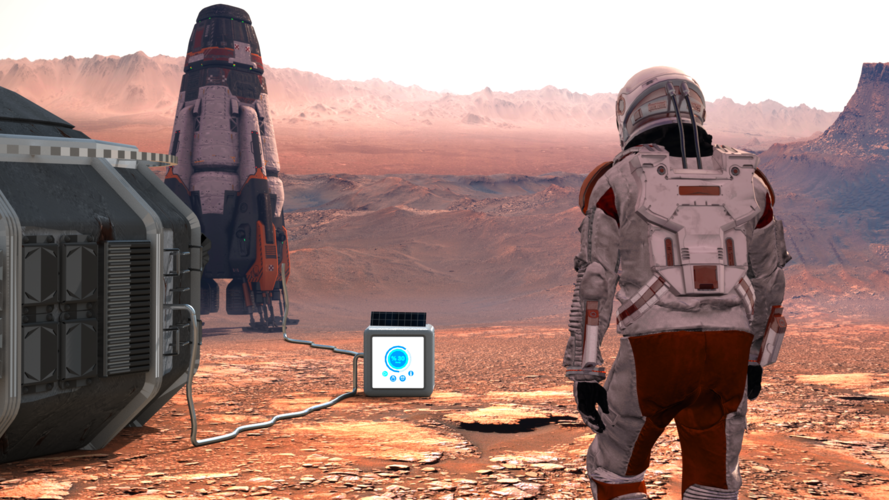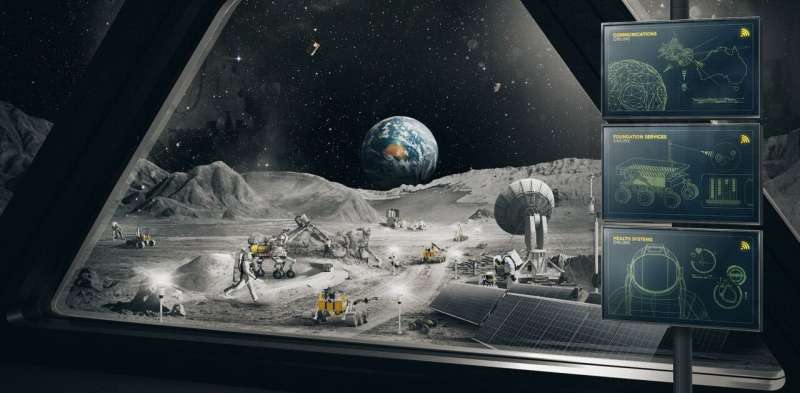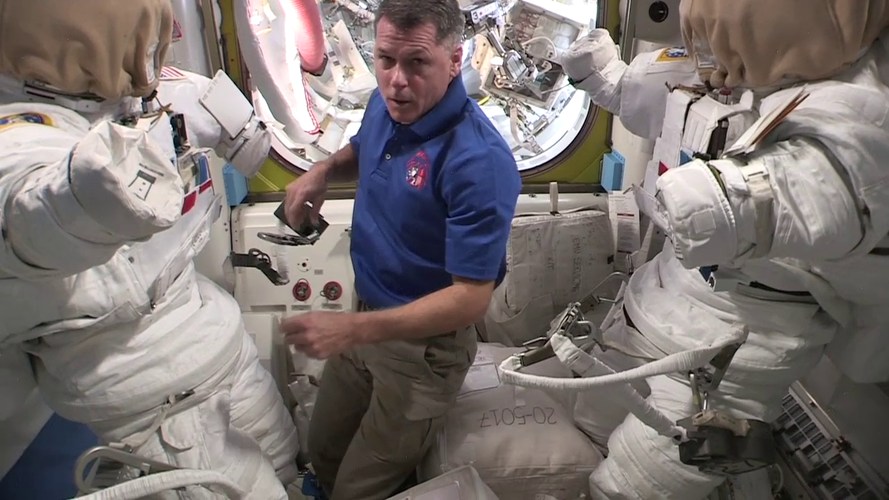
Copernical Team
Researchers find Spinosaurus' dense bones allowed it to hunt underwater
 Spinosaurus, the largest known predatory dinosaur, had bones dense enough to submerge itself to hunt, according to a study released Wednesday.
A group of paleontologists analyzed the density of Spinosaurid bones and compared them to animals such as penguins, hippos, and alligators to determine that both the Spinosaurus and close relative Baryonyx could swim and actively pursue prey in t
Spinosaurus, the largest known predatory dinosaur, had bones dense enough to submerge itself to hunt, according to a study released Wednesday.
A group of paleontologists analyzed the density of Spinosaurid bones and compared them to animals such as penguins, hippos, and alligators to determine that both the Spinosaurus and close relative Baryonyx could swim and actively pursue prey in t International Sea Level Satellite Takes Over From Predecessor
 On March 22, the newest U.S.-European sea level satellite, named Sentinel-6 Michael Freilich, became the official reference satellite for global sea level measurements. This means that sea surface height data collected by other satellites will be compared to the information produced by Sentinel-6 Michael Freilich to ensure their accuracy.
Launched from Vandenberg Air Force Base in November
On March 22, the newest U.S.-European sea level satellite, named Sentinel-6 Michael Freilich, became the official reference satellite for global sea level measurements. This means that sea surface height data collected by other satellites will be compared to the information produced by Sentinel-6 Michael Freilich to ensure their accuracy.
Launched from Vandenberg Air Force Base in November Chef Jose Andres plans paella dinner for Axiom space voyage in April
 Meals are set to get a little more exciting at the International Space Station next month as celebrity chef Jose Andres and his company ThinkFoodGroup will send two dinners to space, as a multinational crew joins astronauts already in orbit.
Andres is giving two dishes - the popular rice dish Chicken and Mushroom Paella and the pork and tomato offering Secreto de Cerdo with Pisto - to
Meals are set to get a little more exciting at the International Space Station next month as celebrity chef Jose Andres and his company ThinkFoodGroup will send two dinners to space, as a multinational crew joins astronauts already in orbit.
Andres is giving two dishes - the popular rice dish Chicken and Mushroom Paella and the pork and tomato offering Secreto de Cerdo with Pisto - to Russian space agency wants foreign partners to pay it in rubles
 The Russian space agency said Wednesday it will insist its international partners pay it in rubles, after President Vladimir Putin said Russia will only accept ruble payments for gas deliveries to "unfriendly countries".
"We will also conclude all our external agreements in rubles," the Roscosmos space agency head Dmitry Rogozin was quoted as saying by the official Tass news agency.
Hour
The Russian space agency said Wednesday it will insist its international partners pay it in rubles, after President Vladimir Putin said Russia will only accept ruble payments for gas deliveries to "unfriendly countries".
"We will also conclude all our external agreements in rubles," the Roscosmos space agency head Dmitry Rogozin was quoted as saying by the official Tass news agency.
Hour Gaia finds parts of the Milky Way much older than expected

Using data from ESA’s Gaia mission, astronomers have shown that a part of the Milky Way known as the ‘thick disc’ began forming 13 billion years ago, around 2 billion years earlier than expected, and just 0.8 billion years after the Big Bang.
Turning astronaut waste into fuel on Mars
 Image:
Turning astronaut waste into fuel on Mars
Image:
Turning astronaut waste into fuel on Mars Australia wants a space industry. So why won't we pay for the basic research to drive it?

In the past few years, Australia has formed its own space agency and launched a defense "space command". Billions of dollars for defense, and hundreds of millions for civilian space, have been allocated from the public purse to develop capability in this growing sector.
This funding covers the Moon-to-Mars Program, the SmartSat Cooperative Research Center, the Modern Manufacturing Initiative, opportunities in defense, various state-funded projects such as SA-SAT, and more.
This level of investment is unquestionably a good thing. But the great majority of it supports applied research and engineering, and commercialization of outcomes. None of the new funding goes to basic research.
In the United States, Canada, United Kingdom, France, Germany, Italy, India, South Korea, China, Russia, and United Arab Emirates—to name a few—basic research in space and planetary science, and science missions, are key elements in strategies to grow their sectors. In Australia, this kind of fundamental work only gets around A$2 million a year. It hasn't budged in a decade.
Why basic research is important
Spacewalk tools with Thomas and Shane
 Video:
00:08:35
Video:
00:08:35
Use the right tool for the job is an often heard saying for any technician, or home hobbyist, and in spaceflight the advice counts double. When astronauts head on a spacewalk outside the International Space Station their tool belt is analysed, choreographed, prepared and checked in detail.
Many tools are made to measure, but in addition they are ordered on the tool belt to be easy to access at the time needed. When everything floats each tool is tethered to the spacewalk suit as well.
In this video ESA astronaut Thomas Pesquet is reciting the tools he and NASA
NASA confirms more than 5,000 planets outside the solar system
 The total number of confirmed planets in the universe ticked past 5,000 this week with the addition of 65 exoplanets, NASA says.
The space agency said the confirmed planets are just a small fraction of the billions of planets the Milky Way likely holds. That number only increases when considering galaxies outside our own.
The newly added exoplanets - worlds that exist outside ou
The total number of confirmed planets in the universe ticked past 5,000 this week with the addition of 65 exoplanets, NASA says.
The space agency said the confirmed planets are just a small fraction of the billions of planets the Milky Way likely holds. That number only increases when considering galaxies outside our own.
The newly added exoplanets - worlds that exist outside ou Characteristics of Apophis, the asteroid that will approach Earth in 2029
 The study, in which the Universidad Carlos III de Madrid (UC3M) and the Universidad Estatal Paulista Julio de Mesquita Filho (Julio de Mesquita Filho Paulista State University) (UNESP) of Brazil are participating, analyses the surface and dynamics of Apophis, an asteroid that will pass close to Earth in 2029.
The Apophis asteroid was discovered in 2004 and has been monitored since then due
The study, in which the Universidad Carlos III de Madrid (UC3M) and the Universidad Estatal Paulista Julio de Mesquita Filho (Julio de Mesquita Filho Paulista State University) (UNESP) of Brazil are participating, analyses the surface and dynamics of Apophis, an asteroid that will pass close to Earth in 2029.
The Apophis asteroid was discovered in 2004 and has been monitored since then due 
































